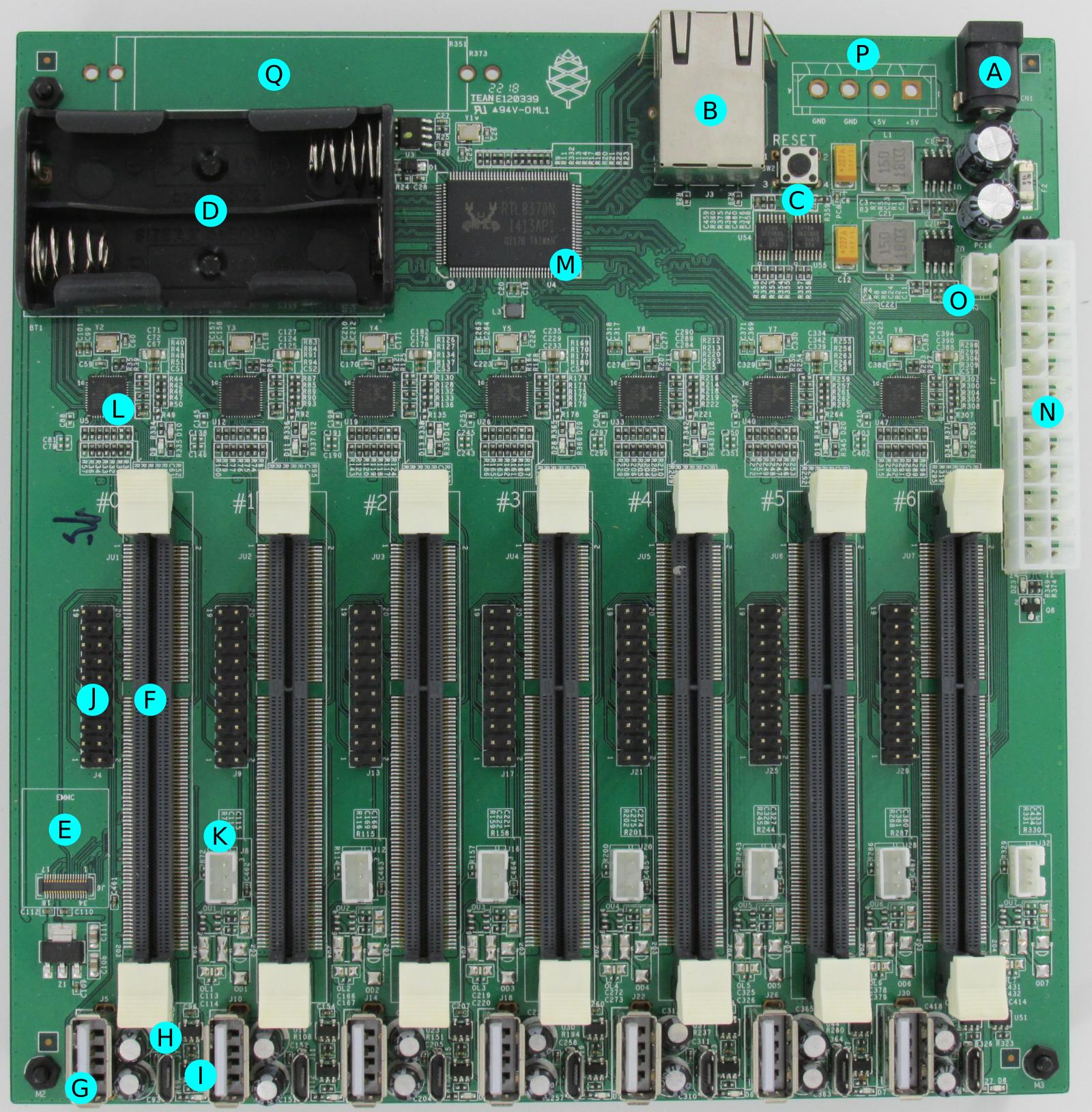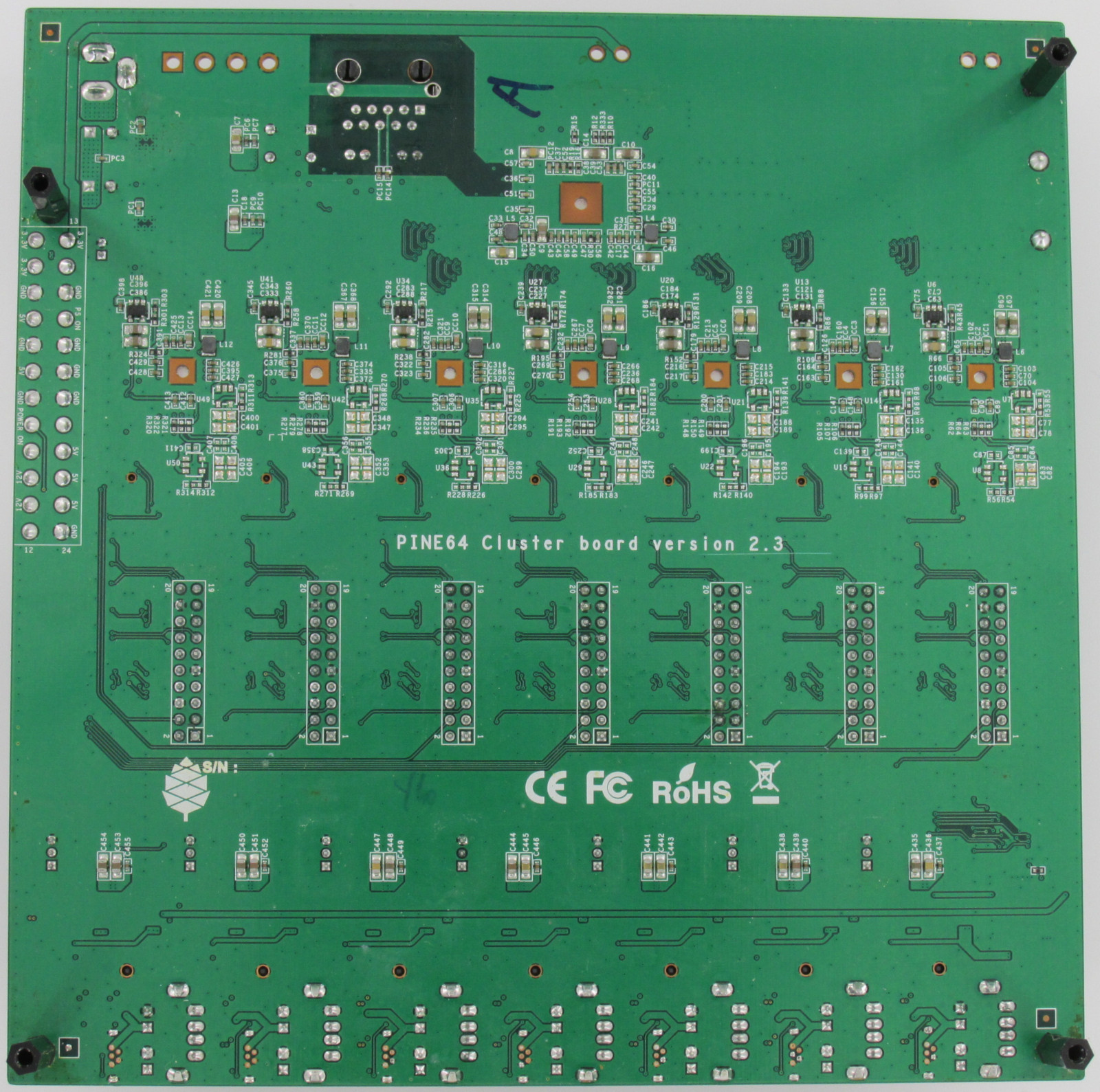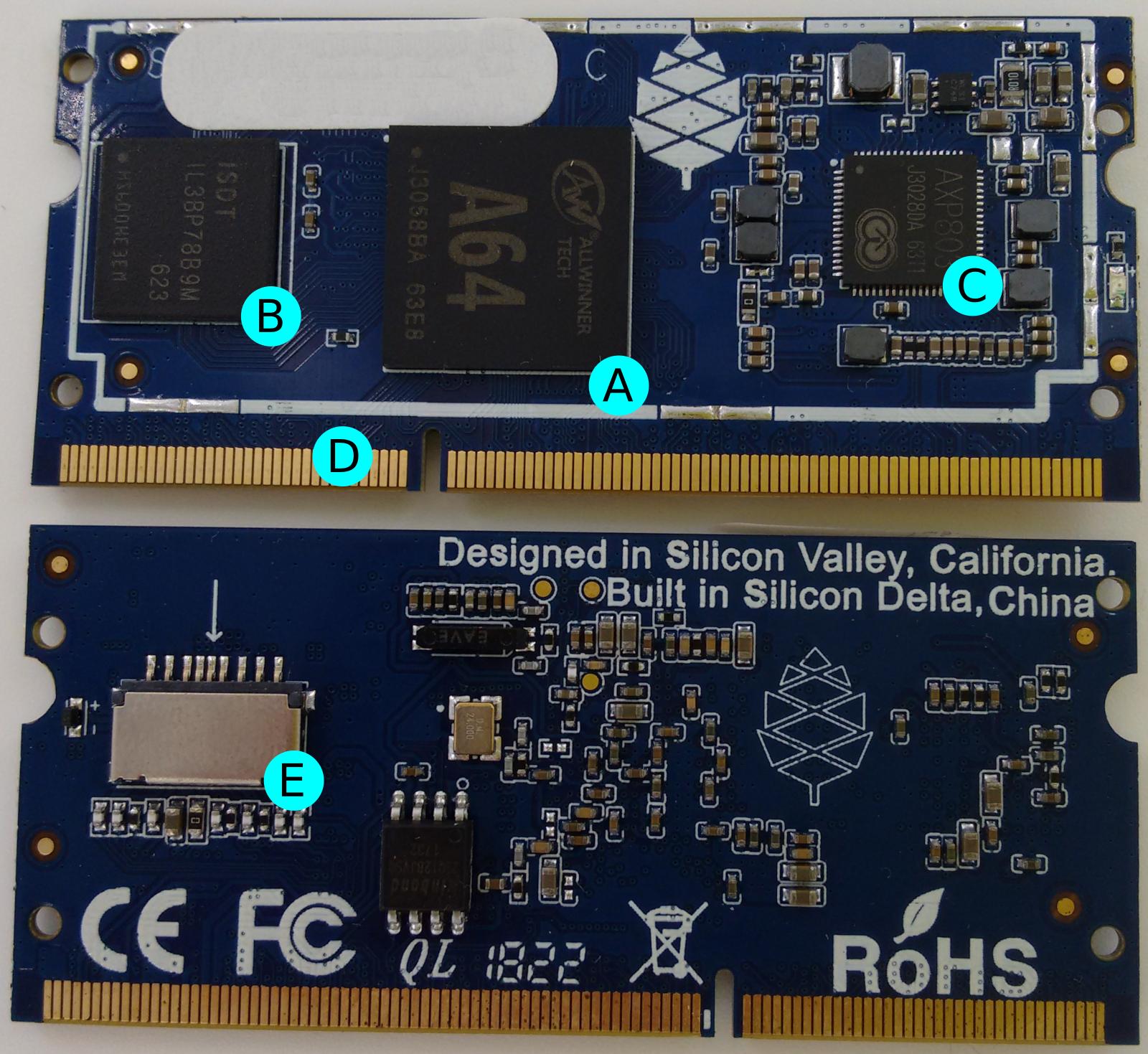Difference between revisions of "Clusterboard"
(Hardware revisions) |
(added categories) |
||
| Line 132: | Line 132: | ||
*https://www.pine64.org/2020/02/03/fosdem-2020-and-hardware-announcements/ Mention of "Clusterboard with 4 SOEdge and 3 SOPine modules" | *https://www.pine64.org/2020/02/03/fosdem-2020-and-hardware-announcements/ Mention of "Clusterboard with 4 SOEdge and 3 SOPine modules" | ||
*https://www.pine64.org/2019/08/05/august-update-london-meetup-pinetab-news-soedge-and-more/ SOEdge Intoduction | *https://www.pine64.org/2019/08/05/august-update-london-meetup-pinetab-news-soedge-and-more/ SOEdge Intoduction | ||
[[Category:SOPine]] [[Category:Clusterboard]] [[Category:A64]] | |||
Revision as of 09:00, 9 October 2020
The SOPine Clusterboard is a way to setup a compact cluster for low power usage and testing. It can hold up to 7 SOPine modules.
Although there is a PINE_A64-LTS/SOPine page already, this page will describe both the Clusterboard and the SOPine modules.
Specifications
These are the specifications as mentioned in the project introduction: (spellchecked a bit)
- Standard mITX Form-Factor
- Built-In Unmanaged Gigabit Ethernet Switch - RTL8370N
- 7x RTL8211E Gigabit Ethernet port, connected to the Switch
- eMMC module Slot
- 7x USB 2.0 (one for each module)
- GPIO pins exposed for each module including UART
- NIC LEDs for each SOPine Module
- 2x 1.5V “AA” size Battery Holder for Real Time Clock Port (RTC)
- +5V 15A power supply with 6.3mm OD/3.0mm ID barrel type DC Jack
- ATX Power Supply Header
Layout
| Label | Description |
|---|---|
| A | 6.3mm OD/3.0mm ID barrel type DC Jack for +5V 15A 75W power supply |
| B | Gigabit Ethernet Port |
| C | Reset Button |
| D | 2x 1.5V “AA” size Battery Holder for Real Time Clock Port (RTC) |
| E | eMMC connector (only for 1st module) |
| F | SOPine Module slot |
| G | USB2.0 USB-A plug |
| H | MicroUSB-B USB2.0 plug |
| I | Network LED |
| J | 20-pin expansion connector |
| K | ?? 3-pin JST connector |
| L | RTL8211E Ethernet Port |
| M | Unmanaged Gigabit Ethernet Switch - RTL8370N |
| N | ATX Power Connector |
| O | ?? 2-pin JST connector |
| P | HDD 5V Power (optional) |
| Q | Resistor (optional, for use with the alternative powering options) |
Parts F to L are duplicated for all 7 modules
20 Pin Connector
SOPine Module
| Label | Description |
|---|---|
| A | A64 SoC |
| B | 2GB DDR3 RAM |
| C | AXP803 |
| D | SO-Dimm connector |
| E | mSD Card Slot |
Accessories
- To operate this board you will need a power supply, Pine advises a "+5V 15A power supply with 6.3mm OD/3.0mm ID barrel type DC Jack" which is also available in the store (EU/US versions). There are other ways to power this board, but they are not described here yet.
- The board works best when it is protected by a (mITX)case, and has some airflow provided by a fan.
- Each SOPine module can use cooling, both by a casefan, and by using heatsinks on the individual modules. At least the A64 could use some cooling.
- The first slot can use a eMMC module, which are in the store in 16GB/32GB/64GB/128GB sizes. The modules can be used as a USB stick using a USB adapter. (The eMMC is also readable with the Hardkernel eMMC to microSD converter.)
- 2x AA batteries, to make sure every device gets the right RTC(Real Time Clock) information.
Installation
To install this cluster it is important to know which module has which IP, so you can make sure you connect to the right board, esp with the module that has access to the eMMC.
You can plug in each module individually, and give them a separate name. After that is taken care of you will know which module is used for what.
Operating systems
Armbian
To get the cluster running, start off with a basic Armbian SOPine install on the first module or directly on all the modules. Armbian offers Debian and Ubuntu as options for download.
There is an issue recognizing the network modules, and a PXE issue. These can be fixed by modifying the image before using it.
Tips
- The board has no hotplug functionality, so make sure you only plug/unplug the modules while the power is disconnected from the clusterboard.
- As a unmanaged switch is used there is no VLAN support.
Frequently asked questions
Q: Are the individual MAC addresses linked to the NIC, or the module. I would say the NIC, which would make it easy to make a list for future reuse.
Hardware revisions
The current version is 2.3. There was at least a 2.2 version, if there is more info, please add it here.
Links
- https://www.pine64.org/clusterboard/ Clusterboard Introduction
- https://www.pine64.org/sopine/ SOPine Introduction
- https://pine64.com/product/clusterboard-with-7-sopine-compute-module-slots/ Store page for Clusterboard
- https://pine64.com/product/sopine-a64-compute-module/ Store page for SOPine module
- https://www.pine64.org/2020/02/03/fosdem-2020-and-hardware-announcements/ Mention of "Clusterboard with 4 SOEdge and 3 SOPine modules"
- https://www.pine64.org/2019/08/05/august-update-london-meetup-pinetab-news-soedge-and-more/ SOEdge Intoduction


